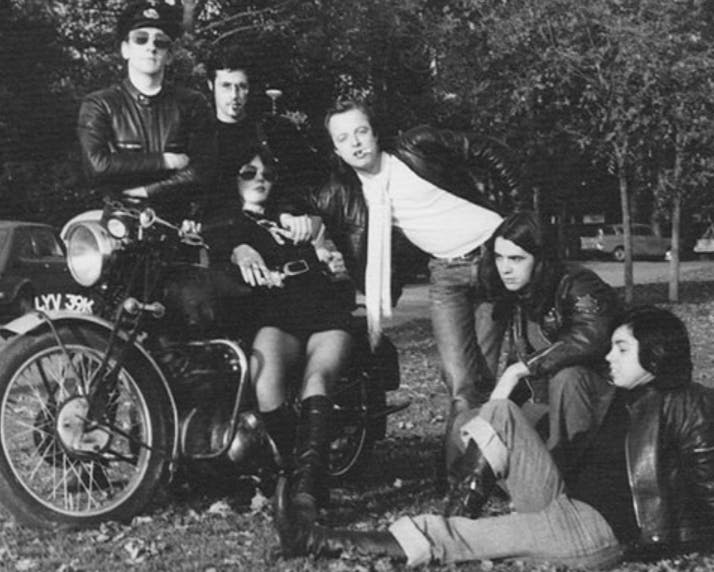Once upon a time, Sussex uni used to be cool. Wait, really?
Walking around campus these days, you could be forgiven for thinking that the place was always as flat as the library roof. February can be an especially grim atmosphere in the austere, treeless grounds while seagulls steal meal deals and shit on the seats. Freshers’ Week here too is widely regarded as one of the most disappointing of its kind in uni’s across the UK. A massively expensive and overrated party under a tent, and a sad little tour of Brighton Pier.
BUT back in the day, Sussex was widely regarded as the coolest and most active uni in the UK. How did this happen?
The Sussex we don’t hear about
Sussex University was the first “Plate Glass” university in the UK, the first modern university reflecting counterculture and the movement away from “Old Boys Club” traditionalism. When Sussex opened, it had twice as many female students as male students.
Michael Beloff, who in 1970 wrote a book about Plate Glass universities described the jealousy of students outside of Sussex, who considered our university as “the most radical of them all” and the “liveliest university in England”. Oxford was “almost a dirty word on campus”.
From the outset, Sussex students were not only involved in planning the university but even in running it, with students actively part of the committee process for major decisions in the university. Michael writes that even discipline was controlled by students.
Far from our SU being forbidden from bringing banners to strikes as it has been recently, the union was only too keen to be at the forefront of social change on campus and would organise widely attended council meetings, sometimes even outside in the sunshine.
It should come as no surprise that when students are genuinely involved with running a university, they help to maximise enjoyment on campus and for years Sussex had an Entertainments Committee, responsible for organising and hosting some of the coolest events going.
“The liberty, status and power of the Sussex student are something new in British academic life.” – Michael Beloff, 1970.
Yes, Hendrix played here
Today, Bramber House and Eat Central are considered by many to be two of the most depressing parts of Sussex uni. The former is another arm of Sussex Management and their corporate affiliates. But in 1967, the New Refectory as it was once known, was host to Jimi Hendrix who played a half hour set to a packed crowd.
Former Sussex students recall how after drinking whisky and being fed hash cookies, Hendrix came out to a delighted audience. 1966 Africa and Asian Studies graduate Roger Martin stated “When he hit those opening chords the New Refectory became electric”.
Other performers included Pink Floyd, The Who, David Bowie, Chuck Berry and more recently Radiohead and Amy Winehouse, with The Kook’s playing at East Slope Bar. Even Bob Marley was booked for a gig in 1975 until he had to pull out due to his eventually fatal illness.
According to 1969 Engineering graduate Alan Melina: "[The campus music scene] was vibrant. It was a very exciting time for music, and for young adults who came of age during the '60s’.
Today we’re left with the bare minimum of student gigs and open mics in Room 76 and Northfield Bar and a massive Pot Noodle careers fair, conveniently set up during the middle of the UCU strikes.
While the Students Union budget gets slashed, we are made to marvel at Adam Tickell tickling his bulging money bags and the super modern Jubilee Business School, host to arms of massive corporations like Barclays and Nestlé which make hundreds of millions of pounds in profit.
We’re made to think that university these days involves three years of minimal contact hours followed by tens of thousands of pounds of debt. Genuine future careers prospects are shite, but if 96% of us end up working for Deliveroo after we graduate then at least it boosts Sussex’s “Employability” ranking.
So, what do we do about it?
More events are needed to make Sussex as cool and fun a place it once was. We need a university system and university leaders who are willing to invest in the kind of genuinely ground-breaking events that can rebuild cool Sussex. Today it’s unthinkable that The Rolling Stones, Stormzy or Biffy Clyro would perform at Sussex, but we should aim to reach for the stars and remember that if Sussex was good enough for Hendrix, Pink Floyd and Radiohead, it can be good enough for anyone to perform.
We need a new Student Committee responsible for ensuring student enjoyment and entertainment. Students need greater wellbeing, but we should also demand the right to have fun.
More social spaces (Think more fun East Slope Bar, less wedding-venue like Northfield Bar). Universities are meant to be places for people to enjoy themselves and have life-changing experiences. Instead of building more business centres, why can’t we build public spaces designed, owned and run by students for ourselves? There is no university without students. We should demand nothing less than our own places where we can express ourselves freely.
More arts. In the past few decades, Sussex uni was filled with pioneering art sculptures, including by those made by world-famous sculptor, Henry Moore. Basil Spence, the person who designed Sussex’s notorious architecture wasn’t trying to be austere and plain, he was trying to show that Sussex was the first in the line, of the non-Red Brick universities of privilege, prestige and poshness. (Yes, he actually tried to do this with red bricks, but perhaps it’s time to re-appropriate them?).Our wonderful banners and artworks which used to be displayed in the Common Room shouldn’t be hidden away in the Fishbowl -they should be proudly on display and joined by other, contemporary art pieces too.
Sussex uni has an incredible array of talent in the visual and performing arts, with societies such as the Drama Society (SUDS), Big Band, Sussex Dance and many more leading the way. Despite this, many students rarely see this talent publicly displayed and encouraged by the university. Rather than spending a thousand pounds of money on felling a fir tree for Christmas every year, why doesn’t the uni promote creativity with permanent art, public murals, sculptures and exhibitions across campus?
We should be asking ourselves, why does everything always have to make money first?
Re-radicalise Sussex
Every now and then, we hear people moaning that Sussex is too “woke” or too “Left-Wing”. It’s sometimes painful to explain to people that this is not only deeply untrue, but that Sussex is actually nowhere near progressive enough, nor as it once was. The fact is, we have a Mandela Hall for a reason here at Sussex. This was the place that helped former South African President Thabo Mbeki get a degree. Sussex students marched from Brighton to London to support Mandela when he was on trial. Apartheid goods were banned on campus.
Sussex students fundraised for an ambulance in North Vietnam and and famously threw a bucket of red paint over a US Embassy Spokesperson to protest the Vietnam War (peace out to Merfyn Jones and Sean Lineham for this). ☮✌
In an appropriate marketing strategy, the Vice-Chancellor talks about how Sussex is “Disruptive By Design”. What kind of disruption is his pay package of over £500,000 a year? We need to re-appropriate the real disruptive design of Sussex, bringing back the genuinely cool and radical history and enjoying ourselves while doing it.
So, the next time you’re walking through campus under an overcast sky and banners advertising corporate “employability”, just remember, you’re walking in the footsteps of Hendrix. Sussex past was cool. Sussex yet to come is cooler still.

